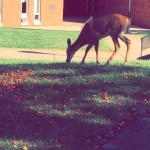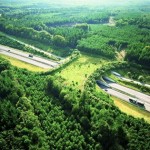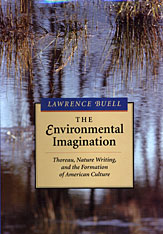Sorry this is so late, I had thought I posted it but I had actually only saved it.
It was a brisk Saturday morning in October, not unlike many I have had throughout my long, extended college career. But unlike most Saturdays I have spent in each of my many autumn semesters, this one was different. I was up early, earlier than usual, but that isn’t what made it different, what made this day so different was what the day entailed. Most Saturdays in my college career I would wake up to go play a rugby match. Over the years it had developed into a routine, but on this particular Saturday I was going hiking.
As many early mornings go for college students, I was slow moving and groggy. I hadn’t gotten nearly enough sleep due to the dryer I attempted to use not working, resulting in me staying up at least an hour later than initially planned. So I strategically brought my pillow with me to sleep in the car. After getting approximately two extra hours of sleep I felt well rested and awake for the remainder of the car ride. As the van I was in continued its trek to the hiking location, I stared out the window observing the various other mountains around us. Captivated by the various colors on the mountain side, I couldn’t help but think to myself that this trip was going to be more enjoyable than originally anticipated. As I mentioned it was a Saturday, and for nearly 5 years Saturday had always been a rugby day. I couldn’t help to be a little upset missing our final regular season game, which, if won, would mean the team would go undefeated for first time since I had joined it. Seeing the colors of the trees as we advanced up the mountain started to ease my anxiety from what I was missing.
Before I knew it we were at our starting point. After exiting the car, and quickly stretching my legs, I began the hike up the trail. It seemed to be going quickly. Every now and then we stopped to make sure our group didn’t become too separated. For the most part, however, the legs were on autopilot and I continued the hike until I reached the first set of clearings. The fellow classmates I was with went and sat out by the edge of the clearing, looking out across the beautiful landscape. After taking in the view and discussing with classmates about how nice it was I began eat lunch and enjoy all that I could see. I sat there, blankly staring out at the various mountain ridges and the sea of majestic colors, letting the view relax me. I thought about the readings I had selected for the response paper that I had handed in that morning, developing a better understanding of what the authors, such as Pollan and Leopold, had been discussing. Pollan in particular was stuck on my mind. In his piece, The Idea of a Garden, he discussed the unpredictability of forests. Looking at the tops of the trees below me I couldn’t help to wonder what had shaped these woods. The intermingling of deciduous and conifer trees had to have some explanation to it. After running through possible reasons for the assortment of foliage I eventually let it go. I was in a new place, it was time to enjoy my day without bothering myself with questions I was not going to be able to answer.
The day flew by. Eventually we were all back in the car driving back to Lafayette College. Having no cell phone service up in the Catskills prevented me from being able to find out about the results of the rugby match, which surprisingly didn’t bother me. I had a wonderful day. Although I will be continuing this year using my Saturday’s as rugby days, it was enjoyable and relaxing to experience something new this semester. For the first time I finally had a brand new Saturday.




